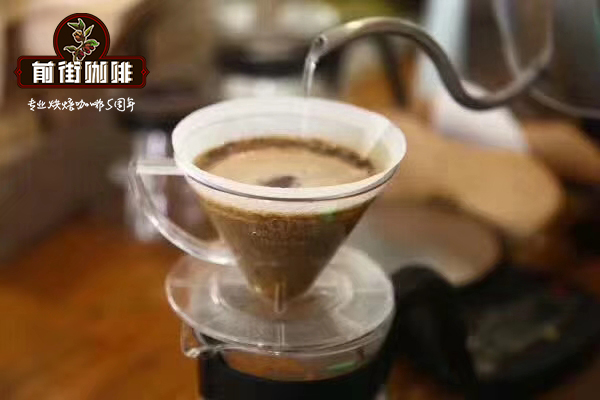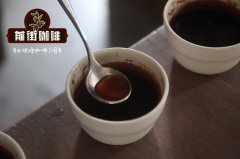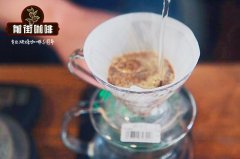Costa Rican coffee Costa Rica Salaka Manor introduction.

Professional coffee knowledge exchange more coffee bean information please follow the coffee workshop (Wechat official account cafe_style)
Finca Salaca is now owned by the Maria Elena family, and almost all the estates grow Villalobos, while Villa Sarchi, derived from a natural mutant of the ancient Bourbon, has long adapted to the climate of Orange County, Costa Rica, and is a coffee with high odor complexity. Villalobos is a branch of Tibica, which is characterized by delicate appearance, floral and citrus aromas and subtle acidity of apricots, peaches and plums. Between 1950 and 1960s, Costa Rica planted a large number of Villalobos species in the western valley, and up to now, a large part of the Villalobos species is still planted on land as high as the western valley. In the late 1960s, Dutch traders introduced Villalobos to Indonesia for planting.
Vera Satchi, a natural mutant of ancient Bourbon, has long adapted to the climate of Orange County in Costa Rica. It is a coffee with high odor, suitable for City (urban-medium) and Full City (city-wide-medium depth) baking. The ground dry powder has perfume, nectar and cherry aromas, mixed with sweet spices like cinnamon twigs, and a fennel-like smell if re-roasted. City baking has sharp acidity like lemon, while bright micro-caramel, cherry sweet and some micro-wheat aromas slowly seep out in the back. Full City baking is sour with peel-like plum fruit acidity, mixed with bitter cocoa, heavy cream and taffy, sweet and sour mixed with hot air, while when cooled, it will show off the smell of sweet and sweet flowers and citrus.
Costa Rican coffee cultivation was introduced from Cuba in 1779 and exported for the first time in 1820. There are now about 32000 coffee farmers, with an average planting area of less than one hectare (10000 tons) per farmer. Costa Rica has a population of 41 billion (2006), with a coffee planting area of 82500 hectares and an annual output of 1.7 million bags (60kgs per bag). The annual domestic consumption is 380000 bags, with an average annual consumption of 5.5kgs per national, which is higher than that of Japan (consumption 4kgs).
Costa Rica is the country where coffee was first introduced into Central America. It has a long history and has a complete self-production and marketing system. Because it is located in the Central American Isthmus, the territory is full of volcanoes and has the natural advantages of sunshine and land, and the climate is reconciled by Pacific and Atlantic currents and sea breezes at the same time, the coffee produced has the characteristics of local micro-climate and local conditions. Costa Rican coffee has always been recognized by the world in terms of quality and quantity, and it has been rated as one of the world-class high-quality coffee. Costa Rican coffee has been cultivated for more than 200 years. It was first planted on the slopes of the Poas and Barva volcanoes, today known as the Central Valley (Central Valley). The seven main coffee producing areas are divided from northwest to southeast, divided according to the inland central plateau.
Costa Rican volcanic terrain with fertile volcanic ash, mild and suitable temperature, and stable and abundant rainfall is one of the factors why coffee has become one of the main agricultural products in Costa Rica. The seven major production regions are: Tarrzu, Tres Rios, Orosi, Central Valley, West Valley, Turrialba and Brunca.
Important Notice :
前街咖啡 FrontStreet Coffee has moved to new addredd:
FrontStreet Coffee Address: 315,Donghua East Road,GuangZhou
Tel:020 38364473
- Prev

Costa Rican coffee Costa Rica Rivas people processing factory treasure manor introduction.
Professional coffee knowledge exchange more coffee bean information please follow the coffee workshop (Wechat official account cafe_style) Mr. Rgulo Gerardo Urea Chacn family, began to grow coffee 26 years ago, the area La Guaca refers to the local aborigines buried a treasure, but so far has not been found, so named treasure manor (La Guaca) is of deep historical and cultural significance
- Next

Brazilian coffee Brazil Ipanema Manor introduction.
Professional coffee knowledge exchange more coffee bean information Please pay attention to the coffee workshop (Wechat official account cafe_style) Ipanema Manor (Fazenda Ipanema) was established in 1969, with more than 5500 hectares of land and 14 million coffee trees, the partner in 25 countries around the world, quite an indicator of the Brazilian manor. In 1991, Brazilian Fine Coffee Association (BSCA)
Related
- Does Rose Summer choose Blue, Green or Red? Detailed explanation of Rose Summer Coffee plots and Classification in Panamanian Jade Manor
- What is the difference between the origin, producing area, processing plant, cooperative and manor of coffee beans?
- How fine does the espresso powder fit? how to grind the espresso?
- Sca coffee roasting degree color card coffee roasting degree 8 roasting color values what do you mean?
- The practice of lattes: how to make lattes at home
- Introduction to Indonesian Fine Coffee beans-- Java Coffee producing area of Indonesian Arabica Coffee
- How much will the flavor of light and medium roasted rose summer be expressed? What baking level is rose summer suitable for?
- Introduction to the characteristics of washing, sun-drying or wet-planing coffee commonly used in Mantenin, Indonesia
- Price characteristics of Arabica Coffee Bean Starbucks introduction to Manning Coffee Bean Taste producing area Variety Manor
- What is the authentic Yega flavor? What are the flavor characteristics of the really excellent Yejasuffi coffee beans?

